Nagaland is a northeastern state in India known for its rich cultural heritage and stunning natural landscapes. Nestled in the eastern Himalayas, it is home to diverse indigenous tribes, each with its own unique traditions and languages. With a history dating back centuries, Nagaland dance offers a glimpse into the vibrant tapestry of Indian culture. Its lush hills, picturesque villages, and annual Hornbill Festival make it a captivating destination for travelers seeking an authentic cultural experience in India.
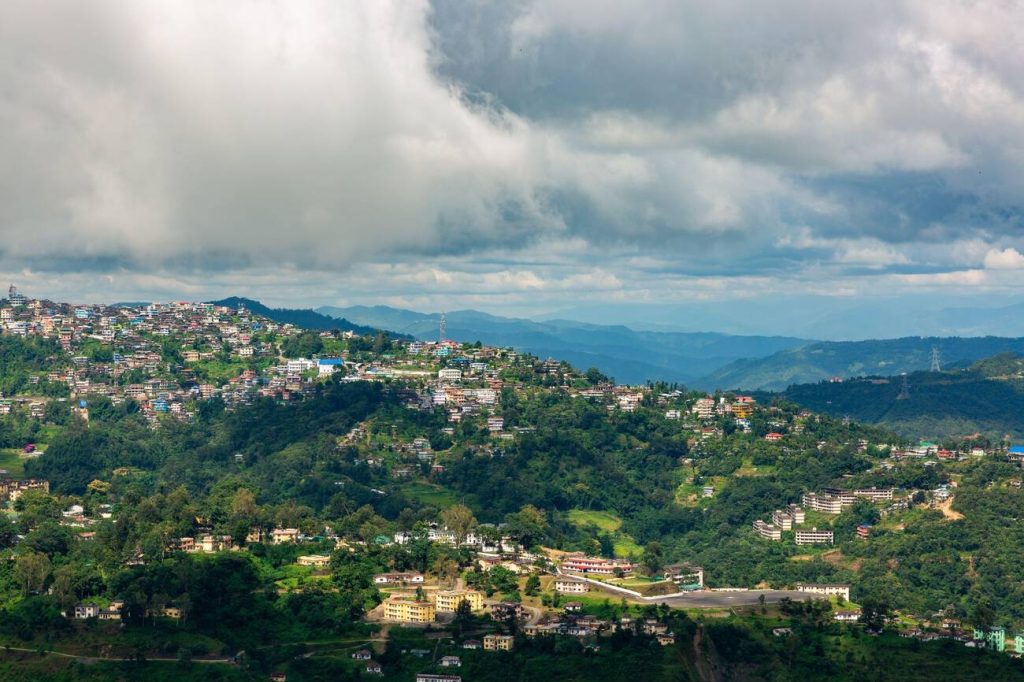
Nagaland’s dance stand as vibrant expressions of the state’s cultural identity. These traditional dances, deeply intertwined with the daily lives and rituals of the Naga people, offer a captivating glimpse into the region’s diverse heritage.
One of the most famous Nagaland dance is the “Tribal War Dance,” a riveting performance that showcases the Naga warriors’ valor and martial prowess. Dancers don intricate traditional attire, complete with ornate headgear and weapons, while they mimic battle movements, creating an electrifying spectacle.
Another notable Nagaland dance is the “Bamboo Dance” or “Ritual Bamboo Dance,” where skilled dancers move gracefully between rhythmically clashing bamboo poles. This intricate and fast-paced dance symbolizes unity, cooperation, and agility within the community.
The “Hornbill Dance” is a celebration of Nagaland’s rich biodiversity, performed during the annual Hornbill Festival. Dancers dress as colorful hornbills and other wildlife, emphasizing the importance of preserving the state’s natural heritage.
These folk dances encapsulate Nagaland’s deep-rooted cultural heritage, reflecting the history, traditions, and values of its diverse tribal communities. They continue to captivate audiences worldwide, serving as a testament to Nagaland’s enduring cultural legacy.
Want To Read More about Hornbill Culture Click Here
Folk dance of Nagaland:
1. Chang Lo or Changmai Dance: This is a graceful and rhythmic dance performed by the Chang tribe. It involves circular movements and is often accompanied by traditional Chang songs.
2. Changsang Dance
3. Naga War Dance
4. Zeliang Dance: The Zeliang tribe’s dance is known for its intricate footwork and use of bamboo sticks. Dancers create rhythmic patterns by striking the bamboo sticks together.
5. Kuki Dance: The Kuki tribe’s dance is marked by its colorful attire and vibrant footwork. It is often performed during festivals and celebrations.
6. Temangnetin Dance
7. Angami Dance: The Angami tribe’s dance often includes elements of storytelling and is accompanied by traditional Angami music.
8. Phom Dance: The Phom tribe’s dances are characterized by their graceful movements and colorful costumes, reflecting their agricultural lifestyle.
9. Butterfly Dance
10. Baimaijai Dance
Chang Lo or Changmai Dance (Nagaland Dance)
Chang Lo, also known as ‘Sua La,’ holds a significant place in the cultural heritage of the local tribal group known as the Chang. According to an ancient legend, this unique dance style was born to commemorate their triumphant victory over their adversaries. Today, it continues to thrive as an integral part of their tradition, marking the beginning of the harvest season during the three-day “Poanglem” festival. Chang Lo’s distinguishing feature lies in its fusion of celebration and warrior symbolism. Dancers pay homage to their heritage by adorning themselves differently. Male performers don traditional Naga warrior armor, while the female artists don vibrant, feminine attire, creating a captivating visual contrast. This collective Nagaland dance form goes beyond mere movements; it incorporates dramatization, making it a captivating spectacle. Chang Lo’s dancing style emphasizes intricate footwork while limiting upper body movement, showcasing the tribe’s unique artistry and cultural pride. In every performance, Chang Lo not only entertains but also preserves the heritage and history of the Chang tribe, ensuring its legacy lives on for generations to come.
Changsang Dance
The Changsang dance is a cherished traditional Nagaland dance originating from the Chang Naga Tribe in Nagaland, India. This captivating performance takes center stage during the Naknyulüm festival, celebrated in the month of July. This Nagaland dance is deeply rooted in reverence for the birthplace of humanity and the Earth itself.
This cultural spectacle seamlessly intertwines with prayers, underscoring the spiritual significance of the Naknyulüm festival. The Chang Naga people come together, offering their devotion to appease the sky God through this vibrant and heartfelt dance. What truly sets the Changsang dance apart is its kaleidoscope of colors and melodies. Dancers don exquisite and vivid costumes, mirroring the vividness of their culture. These attires are complemented by harmonious songs that add an auditory dimension to the performance. In essence, the Changsang dance encapsulates the profound connection between the Chang Naga Tribe, their spirituality, and their ancestral roots, making it a mesmerizing cultural treasure.
Naga War Dance
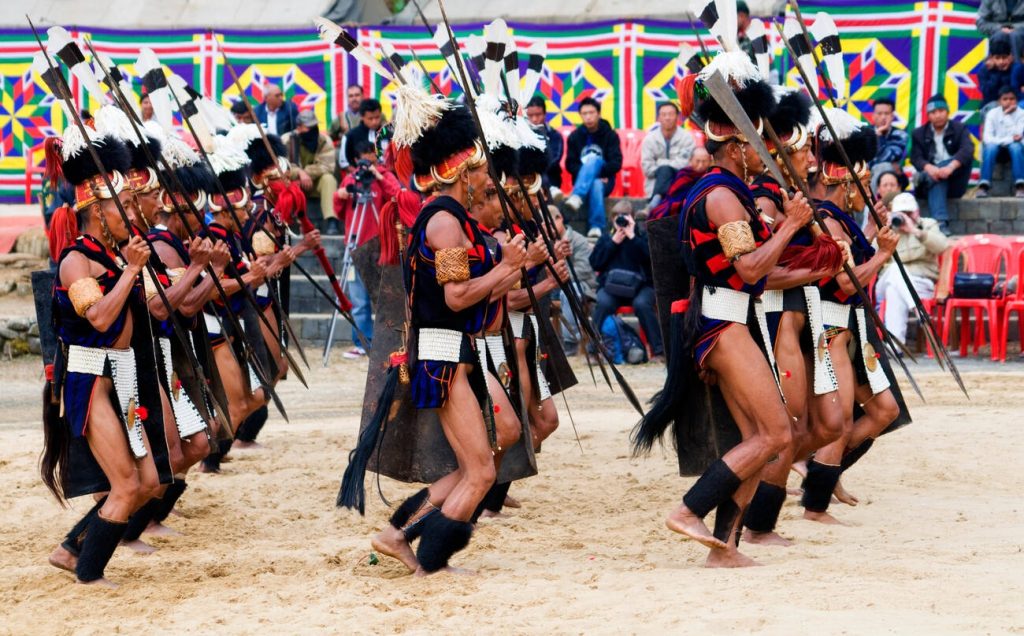
The Naga war dance is a dynamic expression of cultural traditions, where dancers seamlessly blend their entire body into a harmonious unit. Every step and motion vividly portrays distinctive war techniques, making it a compelling display of heritage. What truly stands out is the impeccable synchronization among the dancers, symbolizing their unity and mastery of power. This mesmerizing performance not only preserves cultural richness but also showcases the strength of the Naga people’s shared identity and tradition.
Zeliang Dance
The Zeliang dance is a vibrant and traditional Nagaland dance form originating from the Zeliang Naga tribe in Nagaland, India. It is characterized by its energetic and rhythmic movements, performed to the beat of indigenous musical instruments like drums and bamboo flutes. Dancers wear colorful traditional attire adorned with intricate beadwork and feathers, reflecting the rich cultural heritage of the Zeliang Naga people. The dance often portrays themes related to agricultural rituals, hunting, and celebrations, featuring dynamic footwork, graceful hand gestures, and animated facial expressions. Zeliang dance is not only a form of entertainment but also a significant cultural expression that strengthens the bonds of the community.
Kuki Dance
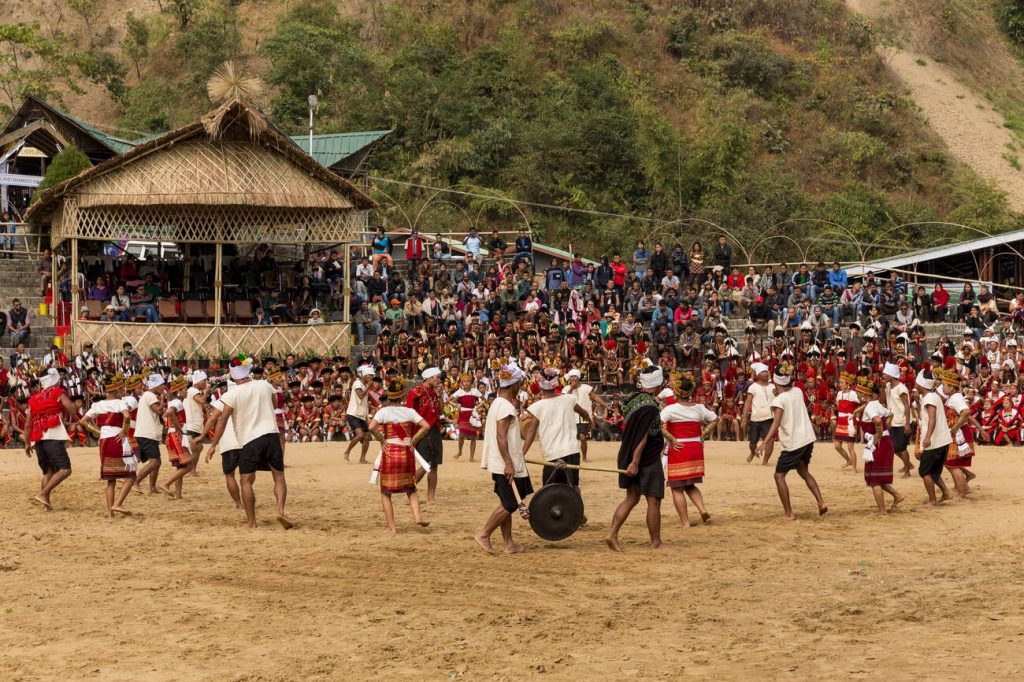
Kuki dance, originating from the indigenous Kuki tribe in Nagaland, a northeastern state of India, holds a profound significance within their cultural tapestry. This vibrant Nagaland dance takes center stage during festivals, weddings, and other significant events, embodying the spirit and ethos of the Kuki people.
Men and women, bedecked in resplendent traditional attire, come together to perform the Kuki dance. Accompanied by the rhythmic resonance of drums and assorted musical instruments, the dance unfolds with exuberant energy and liveliness. Characterized by its swift tempo, the Kuki dance involves intricate choreography and acrobatic feats. Dancers, in moments of sheer enthusiasm, leap and somersault through the air, creating a spectacle that captivates onlookers. Through the Kuki dance, the tribe preserves and shares its cultural heritage, weaving a vibrant tapestry of movement, music, and tradition that reflects the rich and diverse mosaic of India’s northeastern regions.
Temangnetin Dance
Temangnetin dance, also known as the Fly Dance, is a distinctive and culturally rich dance form indigenous to the captivating state of Nagaland. The tribal communities of Nagaland deeply integrate nature and its elements into their way of life, a fact vividly reflected in their folk dances, songs, and cultural festivities.
This dance bears resemblance to the Cricket dance or Gethinglim but is characterized by movements mimicking the graceful Temangnetin insect. What’s remarkable is that both men and women actively participate in this captivating performance, showcasing the inclusivity of Nagaland’s cultural heritage.
Dressed in traditional attire adorned with numerous pieces of metal jewelry, the dancers don a vibrant and authentic look. During the Temangnetin dance, traditional songs are sung, and ethnic instruments are skillfully played, creating a sensory experience that immerses the audience in the rich tapestry of Nagaland’s tribal traditions. This dance not only entertains but also preserves and celebrates the cultural essence of Nagaland’s indigenous peoples.
Melo Phita (Angami Dance)
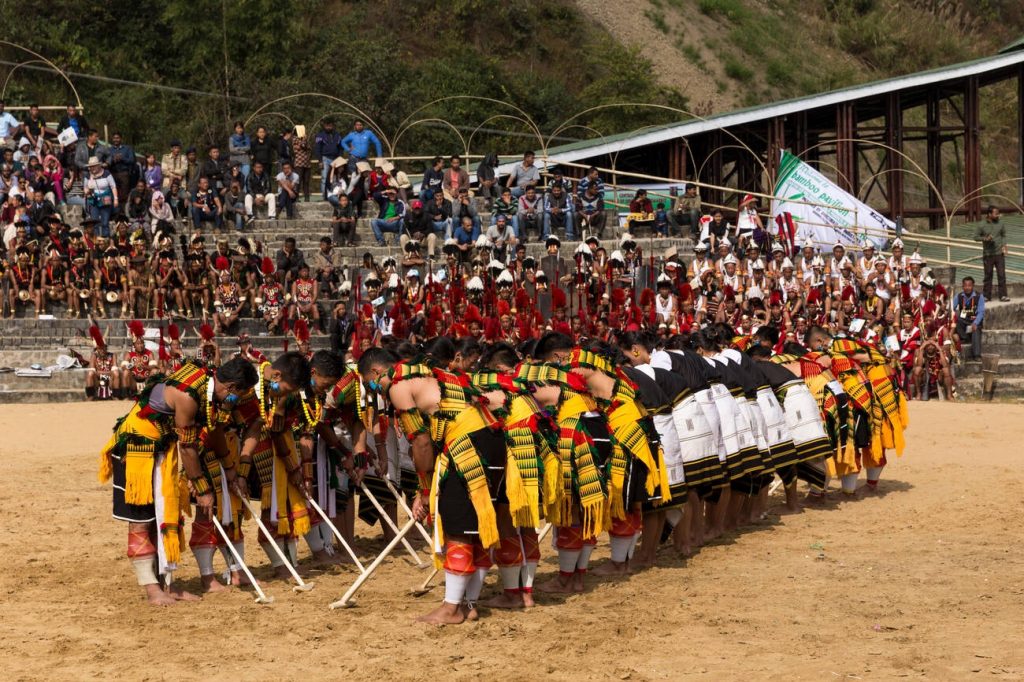
Melo Phita dance is a cherished traditional folk dance intrinsic to the culture of the Angami Nagas, a vibrant community residing in Nagaland, India. This captivating Nagaland dance form takes center stage during the auspicious Sekrenyi festival, a ten-day-long celebration commencing on the 25th day of the Angami calendar month known as “Kezei,” typically aligning with February 25 in the Gregorian calendar.
Sekrenyi, characterized as a purification festival, holds profound significance in the Angami Naga tradition. Its primary purpose is to cleanse individuals of their past transgressions, both in body and spirit, thereby renewing and sanctifying their essence. Unity is a core theme of the festival, as it serves to forge stronger bonds among community members.
Moreover, the Sekrenyi festival serves as a pivotal rite of passage, symbolizing the transition of young individuals into adulthood. With its rich cultural symbolism and the mesmerizing Melo Phita dance, this festival not only rejuvenates the soul but also reinforces the cultural identity and cohesion of the Angami Nagas.
Monyu Asho (Phom Dance)
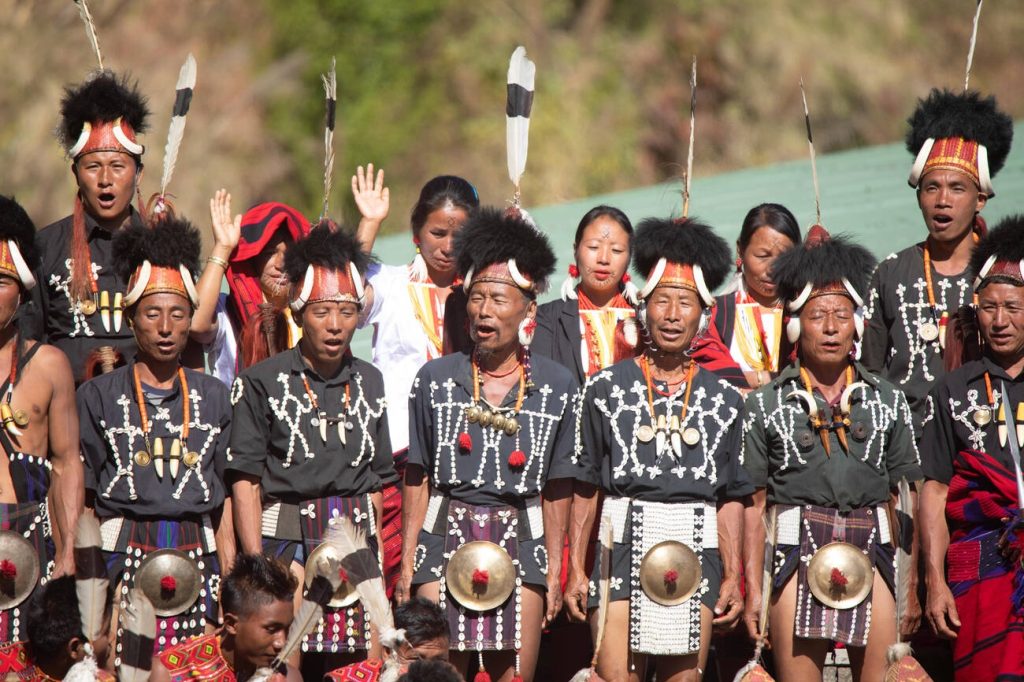
The Monyu Asho dance is an integral part of the cultural tapestry of the Phom Naga tribe, a traditional folk dance that takes center stage during the Phom Monyu festival. This grand celebration, which unfolds in the vibrant month of April, holds immense significance for the community.
The Phom Monyu festival represents a vital transition, symbolizing the shift from winter to summer. It serves as a powerful invocation for divine blessings upon the agricultural endeavors of the tribe. As the seeds sown in the fertile earth begin to sprout, this festival becomes a time of profound prayer and dedication.
Amidst the festivities, the Monyu Asho dance emerges as a captivating expression of Phom Naga culture. Through intricate movements and vibrant costumes, it conveys the tribe’s connection to the land and their deep-rooted agricultural heritage. This dance not only entertains but also reinforces the bonds between the Phom Naga people, their traditions, and the bountiful nature that sustains them.
Butterfly Dance
The Butterfly dance of Nagaland is a captivating traditional folk dance deeply rooted in the rich cultural tapestry of the Chakhesang tribe of Nagaland. This enchanting Nagaland dance form takes its name from the butterfly, an emblem of beauty and grace within their heritage. When engaging in this ritual, participants adorn themselves in resplendent Chakhesang attire, characterized by vibrant shawls, ornate headbands, and intricate ornaments that reflect their heritage.
In a harmonious circle, they unite and move in perfect synchrony, emulating the delicate flutter of a butterfly’s wings through graceful motions of their arms and legs. The accompaniment of traditional musical instruments such as the bamboo flute and drum, combined with the melodious singing of the dancers, creates an exuberant and festive ambiance that encapsulates the essence of the Chakhesang tribe’s spirit. The Butterfly Dance of Nagaland is not merely a performance; it is a profound embodiment of femininity, elegance, and grace, encapsulating the cultural treasures and traditions of the Chakhesang people while celebrating the enduring beauty of nature through their artistry.
Baimaijai Dance (PlateDance)
Baimaijai dance, a cherished traditional folk dance of the Dimasa community, boasts a captivating and unique form. Typically, this graceful dance is executed by young girls or women, who skillfully wield plates or dishes in both hands, making it a striking spectacle. Its distinctiveness lies in the historical context associated with it. In days of yore, during the reign of the Dimasa kingdom, this dance held profound significance. It was performed to celebrate the king’s triumphant victories in wars. When the king emerged victorious, the entire kingdom would erupt in joyous jubilation. The women would gather in the Palace courtyard, adorning themselves with two plates, and commence the Baimaijai dance. This ritualistic performance not only added grandeur to the victory celebration but also symbolized the people’s collective delight and gratitude.
Today, the Baimaijai dance continues to be a cherished tradition, preserving the cultural heritage and historical legacy of the Dimasa community. It serves as a testament to their rich past and enduring traditions.
Musical instruments of Nagaland
Bamboo Flute

The bamboo flute, a simple yet captivating instrument, is crafted from select bamboo of exceptional quality. Its construction is straightforward, allowing for easy crafting, and the resulting melodic tones it produces are truly enchanting. In the Ao dialect, a similar musical instrument known as the “malen” emerges, fashioned from the stump of paddy plants, with its creation reserved exclusively for the harvest season. Both instruments, born from natural materials, carry the essence of tradition and resonate with the profound simplicity of sound creation.
Bamboo Mouth organ
The bamboo mouth organ, a cherished traditional instrument of the Naga people, boasts a rich history. It embodies simplicity in both construction and playability. With dimensions of approximately six and a half inches in length and modest breadth, it exemplifies an uncomplicated yet melodious essence. Often referred to as the “midnight musical instrument,” this harmonica holds a unique place in Naga culture, resonating through the ages as a symbol of musical heritage. Its enduring presence serves as a testament to the artistry and craftsmanship of the Naga people, echoing their deep connection to music and tradition.
Atutu Trumpet
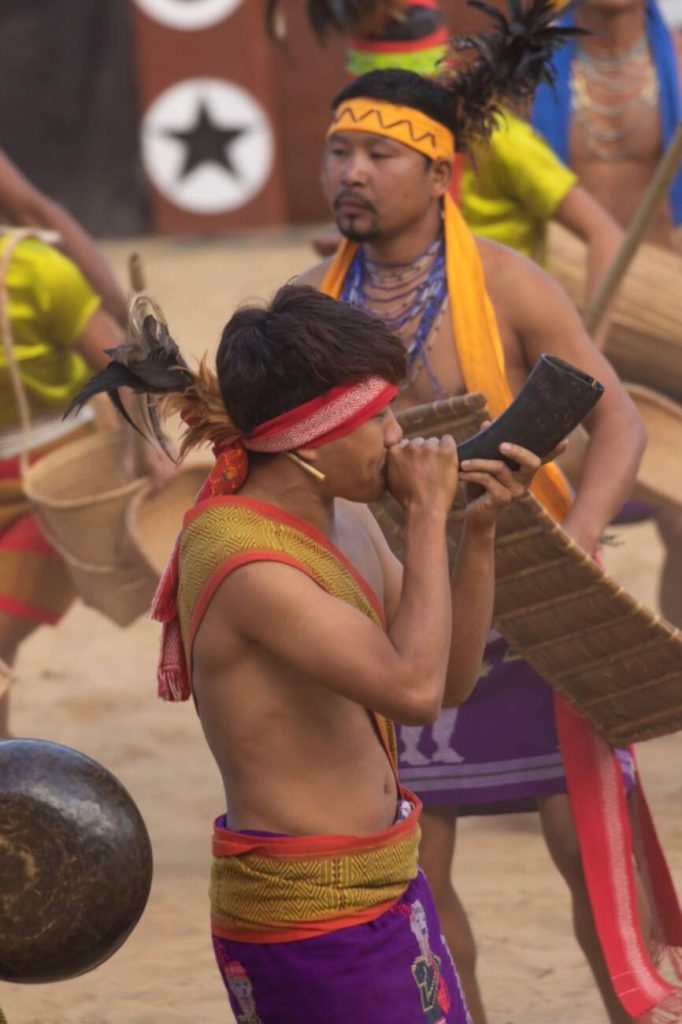
The Atutu is a meticulously handcrafted bamboo trumpet employed by the Pochury tribes in Meluri. Crafted from a specific bamboo variety, its various components are skillfully assembled. This trumpet is traditionally sounded during significant events. For instance, towards the end of February, it announces the arrival of the Nazhu festival. Throughout the festival, male tribe members play it in their morungs during the evenings. Additionally, the trumpet’s sound serves to deter birds and animals from rice fields to prevent crop damage. In the past, trumpeting served as a means to alert entire communities or villages of potential enemy attacks or to declare war.
Mrabung
The Mrabung is an indigenous musical instrument of the Zeliang Nagas. It consists of a single string and is crafted using a hollow, cured bottle gourd for its body and a fretless wooden neck that is approximately 12 inches long. To produce music, a hair string bow is used, typically made by tightly tying together a cluster of horse tails to both ends of a thin wooden stick. When playing the Mrabung, one hand uses the bow to strike the string like a violin, while the other hand presses down on the string along the neck at specific positions to create the desired tune and legato effect.
This instrument is commonly played during social gatherings and festivals where both men and women gather. There is a popular folklore about a Naga singer named Arum, whose music was so enchanting that it captivated farmers to the extent that they abandoned their work in the fields to sit and listen to his songs. It got to the point where Arum had to be prevented from playing further, just so the people would return to their farm work. You can click on the link below to watch an artisan playing the Mrabung.
Dholak
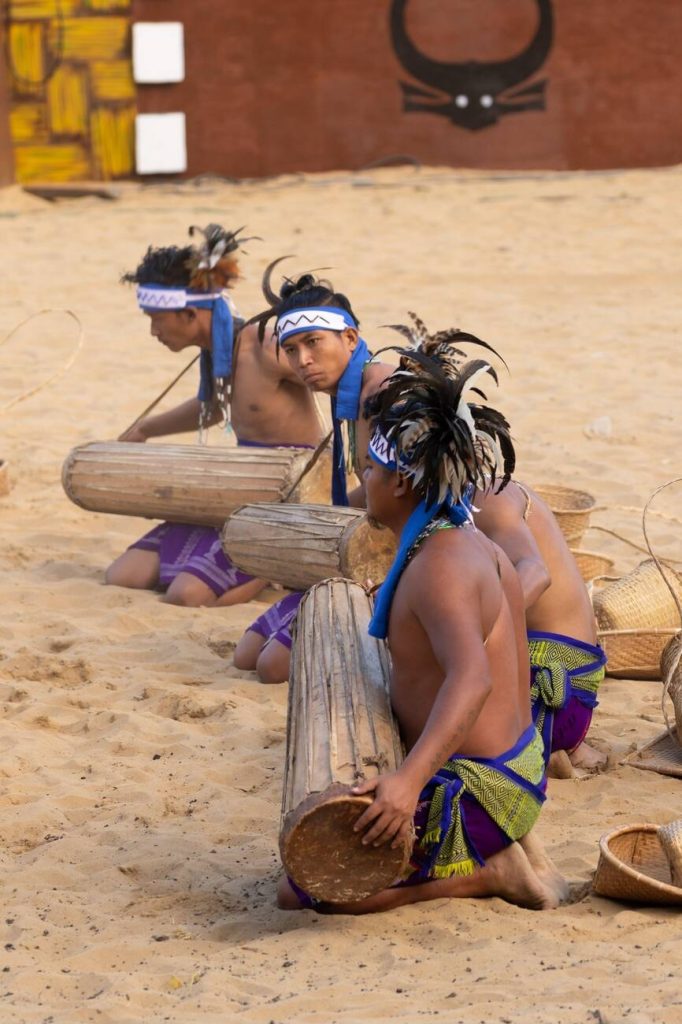
The dholak, a prevalent musical instrument, boasts diverse regional variations across India. Whether at weddings or festivals, it plays an integral role in Indian celebrations. Similarly, in Nagaland, every tribe has its unique rendition of the dholak, or Indian hand drums. These instruments feature wooden casings tightly strung with cotton cords and drumming surfaces crafted from locally available materials, often animal hides. Three examples include the Garos’ long and slender dholaks, the Mech Kacharis’ shorter and thicker ones, and the Aao tribe’s uniform-sized dholaks.
FAQs
-
What is the famous dance of Nagaland ?
The famous Nagaland dance is the “Naga Warrior Dance,” also known as the “War Dance.” It’s a traditional and highly symbolic dance performed by the Naga tribes of Nagaland in northeastern India. This dance often involves intricate movements, colorful costumes, and traditional music, and it is often performed on special occasions or festivals to showcase the warrior spirit and cultural heritage of the Naga people.
-
Which state is the Naga Dance performed?
The Naga Dance is traditionally performed in the state of Nagaland, which is located in northeastern India. This dance is an important part of the cultural heritage of the Naga people, who inhabit Nagaland and the surrounding regions.
-
Which state is kuki dance in?
The Kuki dance is associated with the Kuki people, who primarily inhabit the northeastern states of India, such as Manipur, Mizoram, and Nagaland. So, you can find the Kuki dance in these states.
-
What is the dance of Kohima ?
The “Dance of Kohima” is not a well-known or recognized dance form. Kohima is the capital city of the Indian state of Nagaland, and Nagaland is known for its rich tribal culture and traditional dances. However, there isn’t a specific dance called the “Dance of Kohima.” Instead, Nagaland is known for various tribal dances, each associated with different Naga tribes, such as the Angami, Ao, Sema, and others, each with their unique traditional dance forms and costumes. These dances are an integral part of the cultural heritage of Nagaland. If you have a specific Naga tribal dance in mind, please provide more details, and I’ll do my best to provide information about it.




